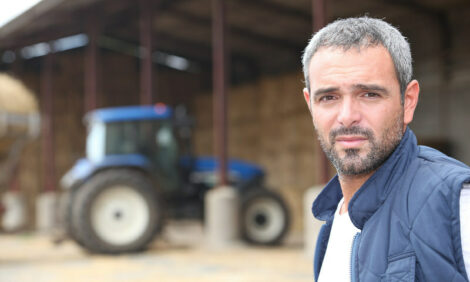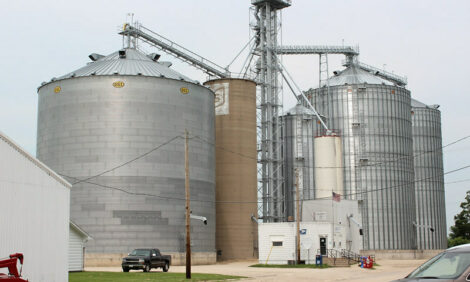



Hay Beats Pasture Grass in Dry Spells
US - The dry summer of 2012 posed challengers to American ranchers who observed that pasture grass suffered more than grass in hay fields.The reason for this, experts at the University of Georgia have said, is down to daily grazing restricting root development. Grass of the same species will perform better in drought if allowed to grow uncut for a month.
"Allowed to grow, grass roots will go down and find water," said Dennis Hancock, University of Georgia Extension forage specialist.
Hancock talked about basic biology of grass at the annual Crop Management Conference held by University of Missouri Extension in Columbia.
Forage crops can withstand the usual summer dry periods, Hancock said. But they must be given a chance to grow and develop deep roots.
The unseen loss from continuously grazed pastures is the killing of roots, he said. If leaves are continuously clipped, the roots die back. There's not enough photosynthesis to feed the roots. That's when lack of roots cuts the supply of water to the leaves.
Lack of strong roots on pasture grasses results in great loss to livestock producers.
Unmanaged grazing cuts losses further. On continuously grazed pastures, cattle get only 30 to 40 per cent of the growth. Rotational grazing, moving livestock off the pasture before all the leaves are eaten, improves total growth.
Dividing a pasture into just four paddocks and rotating animals improves efficiency to above 60 per cent. "There is lots of room for improvement," the Georgia specialist said. "If you had only 30 per cent efficiency feeding your corn, you would do something about it."
In Georgia, grazing dairies increased grazing efficiency to 80 per cent. They rotate cows to new paddocks after every milking.
Improved production from managed grazing is one reason dairy cow numbers are increasing, not decreasing, in Georgia, Hancock said. Forage-based milking herds have a cost advantage.
In a short lesson on grass biology, Hancock explained why grass should be grazed during the rapid growth stage. Production efficiency peaks then.
In early growth, nipping new grass too soon stunts plants. Roots fail to grow deep. At the reproductive stage, when plants set seed, growth stops. Leaves become fibrous when nutrients move into the seed head.
The rest period for forage determines the success of the grazing system.
Hancock praised Missouri farmers who use the "grazing wedge."
"Missouri leads the nation," he said.
To graph the wedge, producers measure dry-matter growth in each paddock with a rising plate meter. The graph shows which paddock to graze next. This helps prevent paddocks from going into the reproductive stage before they are grazed. Each paddock can be grazed at peak production in the rapid-growth stage.
Letting the livestock graze the forage, instead of harvesting and feeding it, is the way to increase profits. "Baled hay is the biggest block to profits," Hancock said. "If you need hay, let your neighbor grow and bale it."
Hancock left a challenge for producers: "There's no reason not to have a 300-day grazing season. Grazing grass can eliminate most of a 120-day hay-feeding season each winter. The goal is not to unroll a bale of hay."
Pasture grasses can be stockpiled, ungrazed, in the fall growing season. That forage can be grazed by livestock through most of the winter.
The underground part of the plants, the roots, extends downward during that fall while resting from grazing. Longer roots help supply the winter forages.


